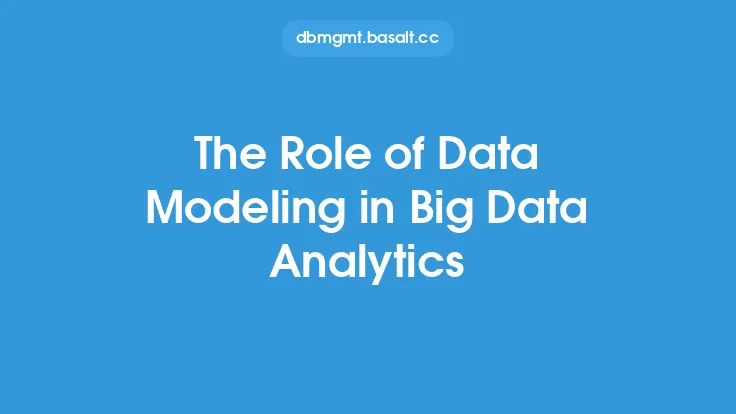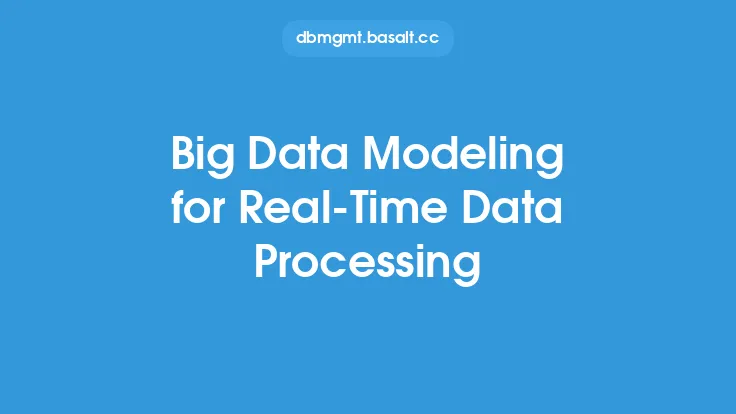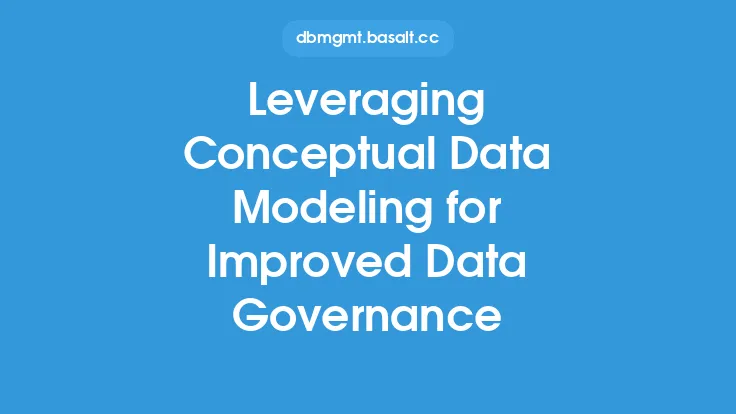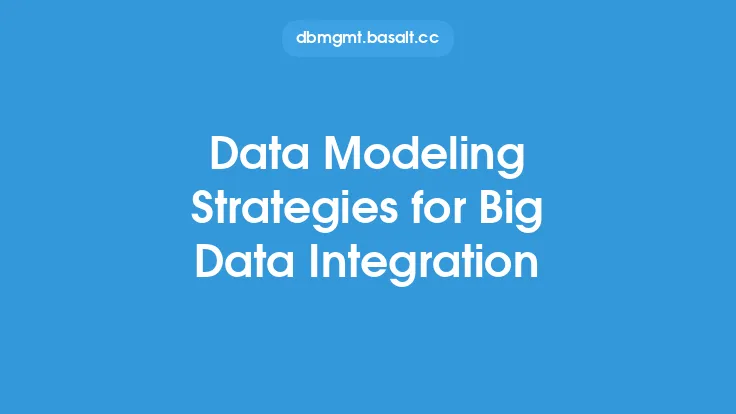As the volume, variety, and velocity of big data continue to grow, organizations are faced with the challenge of managing and governing this data effectively. Data governance is a critical aspect of big data modeling, as it ensures that data is accurate, reliable, and secure. In this article, we will explore the concept of data governance in big data modeling, its importance, and the best practices for implementing it.
Introduction to Data Governance
Data governance refers to the set of policies, procedures, and standards that an organization uses to manage its data assets. It involves defining the roles and responsibilities of data stakeholders, establishing data quality standards, and ensuring compliance with regulatory requirements. In the context of big data modeling, data governance is essential for ensuring that data is properly managed and utilized to support business decision-making.
Key Components of Data Governance
There are several key components of data governance that are relevant to big data modeling. These include:
- Data quality: This refers to the accuracy, completeness, and consistency of data. Data quality is critical in big data modeling, as poor-quality data can lead to incorrect insights and decisions.
- Data security: This refers to the protection of data from unauthorized access, use, or disclosure. Data security is essential in big data modeling, as sensitive data can be compromised if not properly secured.
- Data compliance: This refers to the adherence to regulatory requirements and industry standards. Data compliance is critical in big data modeling, as organizations must ensure that they are meeting the relevant regulatory requirements.
- Data architecture: This refers to the overall design and structure of an organization's data assets. Data architecture is essential in big data modeling, as it provides a framework for managing and utilizing data.
Benefits of Data Governance in Big Data Modeling
There are several benefits of implementing data governance in big data modeling. These include:
- Improved data quality: Data governance helps to ensure that data is accurate, complete, and consistent, which is essential for supporting business decision-making.
- Enhanced data security: Data governance helps to protect data from unauthorized access, use, or disclosure, which is critical in big data modeling.
- Increased compliance: Data governance helps to ensure that organizations are meeting the relevant regulatory requirements, which reduces the risk of non-compliance.
- Better decision-making: Data governance helps to ensure that data is properly managed and utilized, which supports better decision-making.
Best Practices for Implementing Data Governance
There are several best practices for implementing data governance in big data modeling. These include:
- Establishing a data governance framework: This involves defining the roles and responsibilities of data stakeholders, establishing data quality standards, and ensuring compliance with regulatory requirements.
- Defining data policies and procedures: This involves establishing clear policies and procedures for managing and utilizing data.
- Implementing data quality controls: This involves implementing controls to ensure that data is accurate, complete, and consistent.
- Providing training and awareness: This involves providing training and awareness to data stakeholders on the importance of data governance and the roles and responsibilities of data stakeholders.
Data Governance Tools and Technologies
There are several tools and technologies that can support data governance in big data modeling. These include:
- Data governance platforms: These platforms provide a framework for managing and governing data assets.
- Data quality tools: These tools help to ensure that data is accurate, complete, and consistent.
- Data security tools: These tools help to protect data from unauthorized access, use, or disclosure.
- Data compliance tools: These tools help to ensure that organizations are meeting the relevant regulatory requirements.
Challenges and Opportunities
There are several challenges and opportunities associated with implementing data governance in big data modeling. These include:
- Complexity: Big data modeling involves working with large volumes of data from multiple sources, which can make it challenging to implement data governance.
- Scalability: Big data modeling requires scalable solutions that can handle large volumes of data, which can make it challenging to implement data governance.
- Cost: Implementing data governance can require significant investment, which can be a challenge for organizations with limited resources.
- Opportunity: Implementing data governance can provide opportunities for organizations to improve data quality, enhance data security, and increase compliance.
Conclusion
In conclusion, data governance is a critical aspect of big data modeling, as it ensures that data is accurate, reliable, and secure. By implementing data governance, organizations can improve data quality, enhance data security, and increase compliance. There are several best practices for implementing data governance, including establishing a data governance framework, defining data policies and procedures, implementing data quality controls, and providing training and awareness. There are also several tools and technologies that can support data governance, including data governance platforms, data quality tools, data security tools, and data compliance tools. While there are challenges associated with implementing data governance, there are also opportunities for organizations to improve data quality, enhance data security, and increase compliance.





